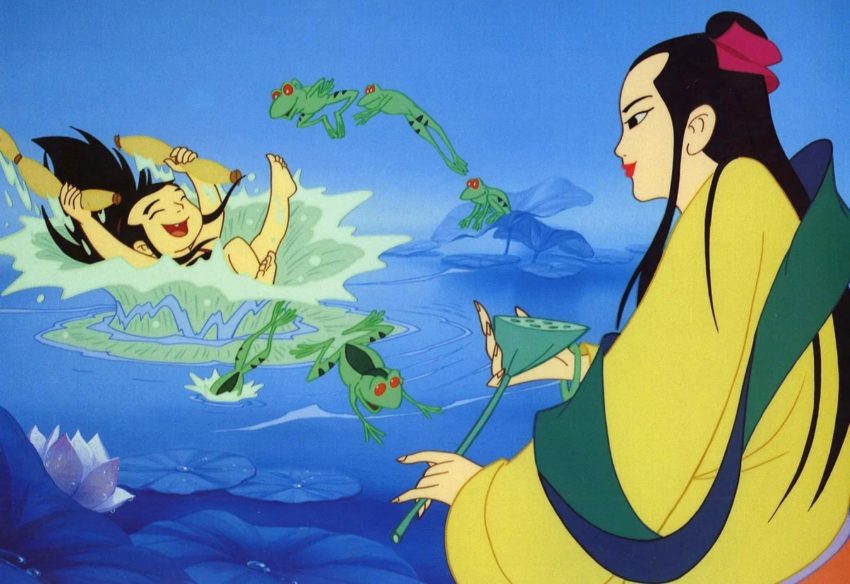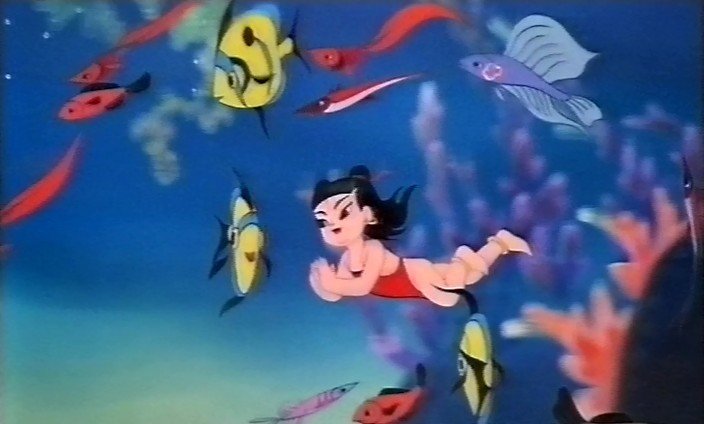Books: History of Chinese Animation
June 17, 2021 · 0 comments
By Jonathan Clements.

Released as part of a Routledge series of translations of Chinese scholarship, Sun Lijun’s two-volume History of Chinese Animation is the largest work yet published in English on the subject, boasting 572 pages on a century of innovation, tribulation and entertainment in the Chinese cartoon business.
The book is unforthcoming about its original incarnation – no chapter is assigned to a single contributor out of the seven credited, nor is it made all that clear when the book was originally published in Chinese (2011), or what is missing from this “selected” translation. But it appears that this is a relatively complete English-language version of a comprehensive account of animation in China.
In an intriguing theoretical exercise, the book investigates “three stages of animated consciousness”, a meditation on the thought processes that go into making inanimate objects move, which will offer rich pickings for animation theorists like Tom Lamarre and Teri Silvio, and which allow their conceptualisation of “animation” to incorporate shadow pictures, glove puppets and marionettes. This risks dragging the book down into pointless primordialism, and, indeed, the writers immediately use it as an excuse to discuss Neolithic Chinese cave paintings as the “origins” of animation, but nevertheless it is an interesting angle (Yasuo Yamaguchi did something similar in his 2004 Complete History of Japanese Animation). When stripped of the usual nationalist bragging, and applied, say, to the cave paintings of Lascaux, so memorably captured in 3D by Werner Herzog in the year this book first appeared in Chinese, it’s a thought-provoking concept.
In a distraction all too common in academia from the People’s Republic, the reader must be watchful for moments when scholarship is tainted by glib and misleading assertions of Chinese essentialism, something that Wu Weihua has previously referred to as “discursively similar expressions of one-dimensional cultural memory.” The writers admit that the Wan brothers’ Uproar in an Art Studio, for example, was inspired by the work of the Fleischer brothers, but tiptoe around the deeper and more interesting point (as noted elsewhere by the more openly transnational Daisy Yan Du), that they were working for a New York company at the time, founded by a Chinese American. When they get to the North-East Film Studio in the post-war period, they guardedly mention that the animator Fang Ming was “also known as Tadahito Mochinaga”, but only admit that he was actually Japanese in a picture caption!

Despite this, the authors offer an account not merely of the development of animation in China, but of film itself, as Chinese innovators experimented with new-fangled ideas like changing camera positions or close-ups. This is not merely background information, it is a step in the development of animation itself, as glimpsed in such moments as a graphic overlay of clouds, used as a special effect in The Fairy Gives Flowers to the Earth (1920). In an impressive series of developmental leaps, it was a mere 17 years from the first Chinese animated short, an advert for a typewriter company in 1922, to the feature-length Princess Iron Fan in 1939. Or at least so the writers claim – in fact, Princess Iron Fan was not released until 1941, and in counting to the start of production rather than completion, the authors appear to be disingenuously announcing a spurious victory in some sort of race against foreign competition – a contest that only exists in their minds.
But such childish one-upmanship aside, the narrative soon clicks onto an informative track about the influential Wan brothers, who made many of China’s early cartoons, and also played an integral role in early martial arts films by adding the zap-pow special effects to The Burning of the Red Lotus Temple (1928). After the outbreak of war with Japan in 1937, the book is peppered with useful synopses and production details of many propaganda films and entertainments, right up to the aforementioned Princess Iron Fan, intended by the Wans as a direct response to Disney’s Snow White (“Princess White Snow” in East Asian markets) and an allegory of the anti-Japanese resistance.
It takes 100 pages to get to the foundation of the Shanghai Animation Film Studio, which would dominate Chinese animation output for the next three decades, a topic already well covered elsewhere in English by Sean Macdonald. Here, the book’s synopses take on substantially more illustrations, talking through the grand successes of the studio, the education of animators in nearby Suzhou, and the many awards that Chinese animation picked up at international film festivals – foreign contacts apparently being much more worthy of discussion when the foreigners are handing out prizes.

There are also some odd editorial slips – Havoc in Heaven, released in two parts in the 1960s, is bafflingly referred to as “the first cartoon feature film”, even though we already know that’s not even true in China, where Princess Iron Fan was two decades ahead of it. I can only assume that the authors are also engaged in some kind of battle of one upmanship with each other, all desperately scrambling to come up with reasons why their chapter is the one with all the “firsts” in it.
Not having seen the Chinese original of this book, I couldn’t tell you if it was the editor, Sun Lijun, unwilling or unable to be firm with his contributors, or the translators Shi Yi and Li Junting unwilling or unable to rule on what are clearly errors or misunderstandings that a judicious translator should fix. Whoever should carry the can, such fudges really do not belong in a two-volume academic collection that retails in hardback for £250.
I’ll stop now. And I’ll get back to the book’s many good points, which include a welcome chapter on the development of animation in Hong Kong before the Handover, a subject all too often ignored by Chinese academia until 1997. Even more impressive is a chapter on the development of animation on Taiwan before the 1970s.

The second volume of the book picks up the story in the 1970s after the Cultural Revolution, with the resurgence of creativity and finance that led to Nezha Conquers the Dragon King (1979). Here, the authors admirably continue their policy of not only focussing on the People’s Republic, but also on animators at work in Hong Kong and Taiwan. They deal with arguments for the uniqueness of Chinese animation – not idle boasts for once, but matters of industrial policy as Chinese animators try to make their work stand out on the international market. And they deal with the arguments within the industry over the adoption of a “Disney model”, trying to reverse-engineer the kind of blockbuster than can float a theme park, and ending up with Lotus Lantern.
No films are mentioned after 2016, but I assume that these post-2011 comments are insertions made during the translation process, updating awards lists since what seems to have been the original publication date, or perhaps the second volume did indeed appear three or four years after the first in the original Chinese.
There is a lot of good information in this book, and it will be a welcome addition to the animation shelves in many a library. As I have noted elsewhere with regard to a similar collection from Routledge on Chinese martial arts, it is actually quite valuable and instructive to get a glimpse of the sort of thing that passes for peer-reviewed research in China, but also dispiriting to see truly informative and useful work hobbled by such unnecessary flaws.
Jonathan Clements is the author of Anime: A History.
Leave a Reply